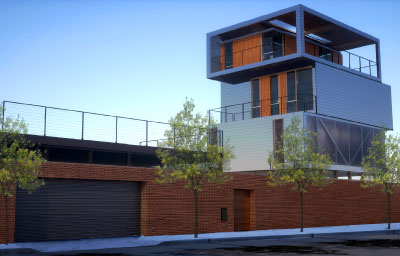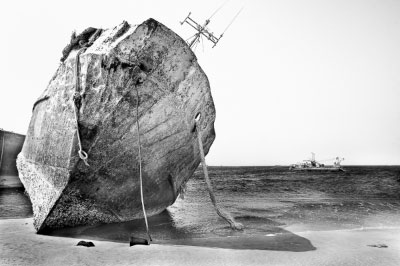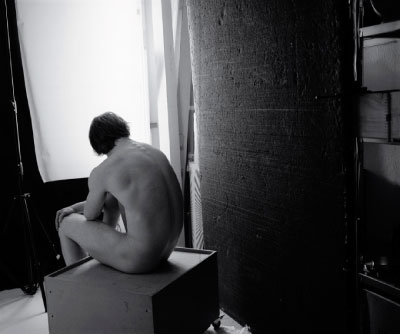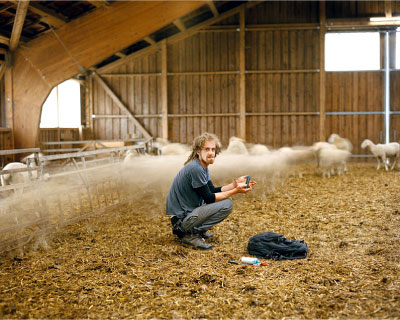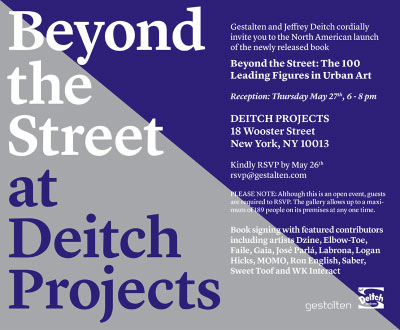
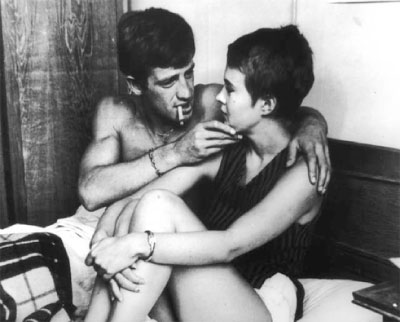
![]() Fifty years ago today, Jean-Luc Godard’s Breathless broke new ground and heralded the arrival of what came to be known as French New Wave Cinema. Breathless was shot in a single summer, in a style unprecedented by previous films. Godard was 29. Determined in equal parts by practical and aesthetic concerns, the film’s distinct jump cuts, long shots, and vivid visual style — combined with its exploration of existential themes through Michel, the petty, Humphrey Bogart-obsessed criminal, and his lover, Patricia, played by Jean Seberg in the role that made her famous — came to define an iconic moment in contemporary film.
Fifty years ago today, Jean-Luc Godard’s Breathless broke new ground and heralded the arrival of what came to be known as French New Wave Cinema. Breathless was shot in a single summer, in a style unprecedented by previous films. Godard was 29. Determined in equal parts by practical and aesthetic concerns, the film’s distinct jump cuts, long shots, and vivid visual style — combined with its exploration of existential themes through Michel, the petty, Humphrey Bogart-obsessed criminal, and his lover, Patricia, played by Jean Seberg in the role that made her famous — came to define an iconic moment in contemporary film.
A fully restored version of the film was released last month by Optimum. While it’s hard to imagine seeing this movie for the first time, seeing it restored today reminds us of its stand-alone style and hopefully brings new admirers to what remains a revolutionary work.
(more…)




The US Department of Energy defines a zero-energy building, or ZEB, as “a residential or commercial building with greatly reduced energy needs through efficiency gains such that the balance of energy needs can be supplied with renewable technologies”. What’s most revolutionary about the concept of a ZEB is that it asserts that city structures can meet all their energy needs from such low-cost, locally available, and renewable resources as solar and wind power.
Red Hook Green is approximately 4,000 square feet and includes space for a studio/workshop, corporate offices, garages and a residential apartment — as well as an outdoor green space. Inspired by shipping containers (whose creative potential we covered earlier), the building’s form pays homage to the its Red Hook location, which has long been defined by its active shipping port. Composed of stacked, modular units, the design also takes advantage of the area’s incomparable harbor views. Here’s hoping that this initial effort allows the most greenest of design concepts to take root in the most urban of settings.
Red Hook Green is to be completed by December 2010. Until that time, those interested can follow its progress through its blog.
(more…)



![]() Jan Smith has worked as a businessman and entrepreneur for much of his life. After selling his company five years ago, he committed himself to what he had long considered just a hobby: photography. His recent project captures the shells of abandoned ships in the world’s largest “ship cemetery”, in Nouadhibou, Mauritania. Smith spoke to PLANET about his body of work and the rugged journey that led him to Nouadhibou.
Jan Smith has worked as a businessman and entrepreneur for much of his life. After selling his company five years ago, he committed himself to what he had long considered just a hobby: photography. His recent project captures the shells of abandoned ships in the world’s largest “ship cemetery”, in Nouadhibou, Mauritania. Smith spoke to PLANET about his body of work and the rugged journey that led him to Nouadhibou.
How would you characterize your work?
I’m really drawn to things that are overlooked, what most people don’t seem to pay attention to. If you pay attention to what I’m taking a picture of, you’ll see the story behind it. But I don’t really want to tell you that story up front.
Can you explain the story behind the approximately 500 abandoned ships?
In the 1980s, the fishing industry was nationalized. And rather than turning in some of the ships to the government, some of the smaller companies simply left them languishing there. When the government took over the boats they realized they didn’t really have the expertise to maintain them. And so when eventually they’d break down, or they’d need an overhaul, and they ended up being abandoned in the bay as well. That made it into an ideal place to then cover up abandoning other ships [for] insurance fraud. Rather than recycling the boat or bringing it all the way back to the waters of Europe or China, it was easier to write them off as sunk or unusable and claim the insurance.
(more…)


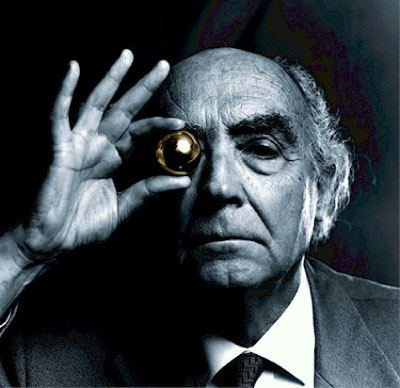
![]()
Portuguese novelist José Saramago died last Friday on the Spanish island of Lanzarote. He was 87. Saramago is known for his poignant parables on humanity and politics. Awarded the Nobel Prize for literature in 1998, his works have since been translated into more than twenty-five languages. A vocal leftist, Saramago worked for years at various odd jobs before losing his job as a newspaper reporter after the downfall of Portugal’s incipient Communist revolution in 1975. He decided then to become a novelist. His strange, beautiful writing is perhaps best memorialized by these haunting words from his perhaps most famous novel, Blindness: ‘Why did we become blind, I don’t know, perhaps one day we’ll find out, Do you want me to tell you what I think, Yes, do, I don’t think we did go blind, I think we are blind, Blind but seeing, Blind people who can see, but do not see.”
Saramago strived his whole life to help the rest of us to see.


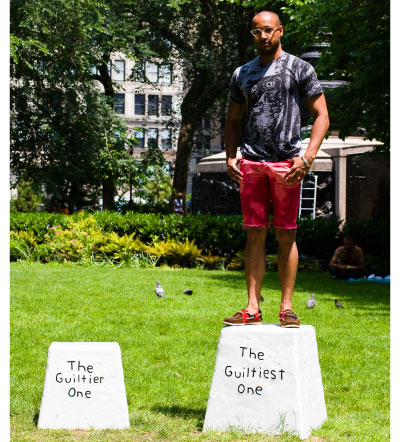
Miranda July, Eleven Heavy Things, Union Square, New York, NY. Photography by Brian Paul Lamotte. Courtesy of the Artist, Deitch Projects, NYC Parks & Recreation, and the Union Square Partnership.
(Click images to enlarge)
July seeks here to bring organic performance on the part of the viewer, rather than simply display works of art. And the beauty of these pieces lies in the interactions that they successfully create: tourists and native New Yorkers alike can be seen at all hours of the day posing for pictures as the Guiltier One, poking limbs through bizarre holes, and hugging strangers “for the picture”. A simple search through Flickr for “eleven heavy things” is enough to reveal how extensive public participation has already been in this project.
Originally created for the Venice Biennale, Eleven Heavy Things is presented in New York by Deitch Projects as its last and final public project. The exhibit will be on display until October 3, 2010 in Union Square.
(more…)



Till writes, “For me, the book is like a thought bubble in which many thoughts, ideas and desires circle around each other like the planets of our universe. They influence each other, but as they differ so much in respect of volume, texture, and maybe size, they will stay in their own orbit.” The subject matter on these pages ranges wide, but the colors and forms reverberate off of each other in their exploration of nighttime, and together evoke what it feels to be awake as the dark lonely hours stretch into morning.
Joscha Bruckert is the editor of Romka, a photography magazine that features the personal photos of professional, student, and amateur photographers from all over the world. Till is working on several other projects and plans to enroll in an MFA program at Ohio University in the fall. A Man Sat Alone In His Room is available in its first edition of fifty copies, numbered and signed. All copies include four free posters, and can be ordered online here.
(more…)


What does “holon” mean?
The term holon describes something that is simultaneously a whole and a part. Each holon has two tendencies: to exist as an autonomous, self-reliant unit and to be also an integral and dependent part in sub-ordination to controls on higher levels. It is a system (or phenomenon) which is an evolving self-organizing dissipative structure, composed of other holons, whose structures exist at a balance point between chaos and order. It is more a scientific term, but it describes the people of my series perfectly.
(more…)



Book release and signing for Beyond the Street will take place tonight, 6-8 pm at Dietch Projects, 18 Wooster St., New York, NY. RSVP at rsvp@gestalten.com.

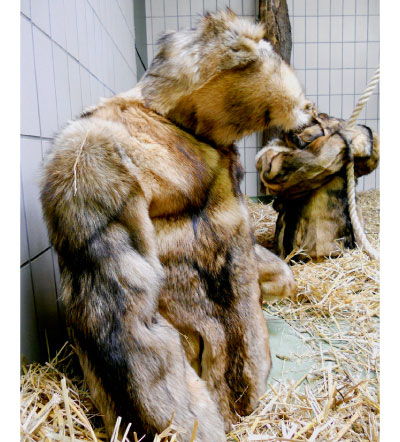
Photography and Film courtesy of NEOZOON
The latest project by NEOZOON is the non-toed fur-coatie: Pellicusia Urbana. Continuing the collective’s exploration of public attitudes toward captive animals, the non-toed fur-coaties are upcycled fur coats stuffed with moving machinery that creates an effect eerily similar to that of a living, breathing animal. Zoos in the German cities of Münster and Magdeberg have populated a few of their cages with the fur-coaties, complete with signs and descriptions. The fake creatures have also been spotted in public parks and playgrounds throughout Berlin.
(more…)

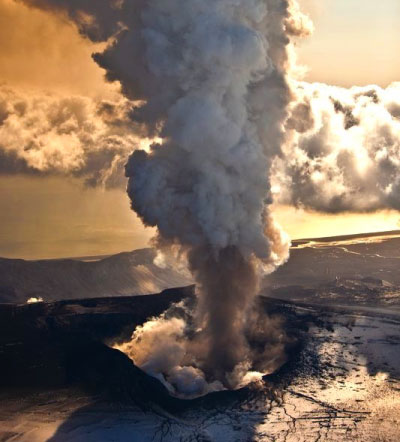
Eyjafjalljokull Volcanic Eruption, April 21, 2010. Photography courtesy of Ragnar Th Sigurdsson/arctic-images.com. (Click to Enlarge)
Occasionally reminiscent of the best CGI in recent science fiction and fantasy films, the bizarre and magnificent landscapes captured by Sigurdsson provide a humbling view of our planet: what human forms and structures appear in his photographs are shadowed in comparison to the expansive arctic sky, looming glaciers, mountain ranges and volcanic eruptions. The collection should remind those frustrated travelers that while we were all grounded under fluorescent airport lighting, the cause for the worldwide travel snarl was, in fact, simply and stunningly beautiful: Sigurdsson, as ever, was there to capture it for us.
(more…)






 Facebook
Facebook Permalink
Permalink Digg
Digg Reddit
Reddit LinkedIn
LinkedIn StumbleUpon
StumbleUpon Tumblr
Tumblr